Aladdin – Review for the Sega Genesis or Mega Drive
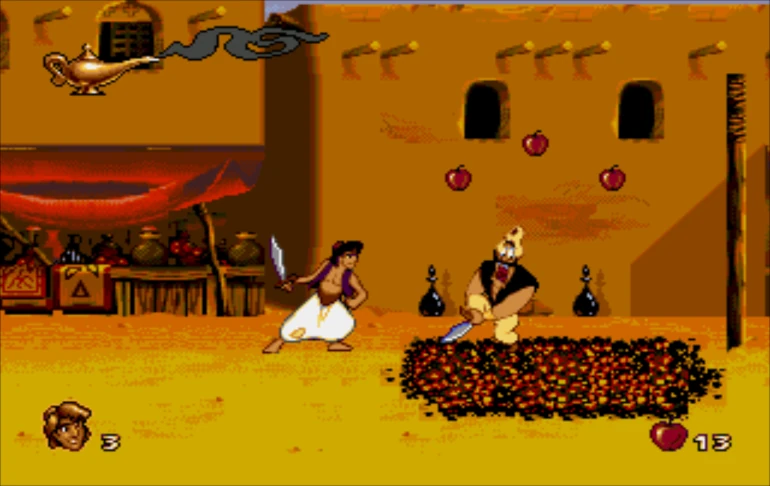
This time, for our retro analysis, we’re going back a few years to when that great company called Disney still made original and fun games for both kids and older players. We’re in the middle of the Aladdin boom, one of the most entertaining Disney movies ever, which somehow managed to cross over into multiple consoles with different versions on each.
Though it’s not usually my thing to do specific reviews, this time I feel completely obligated. Maybe someday we’ll get to read a review about another Aladdin classic, but today we’re focusing on the Mega Drive edition. We could be looking at just another simple, boring, childish platformer, but this adventure has it all—addictive gameplay, challenge, technical quality. It’s a shame they don’t make stuff like this anymore. The pursuit of easy money ends up ruining any product—who wants 20 identical games running on the same engine? We want beautiful things like Aladdin—this was worth every penny.
Every hero has their nemesis. If Aladdin is our charismatic protagonist, his fearsome enemy is Jafar, a cunning sorcerer who wants to take over the country he lives in, all thanks to the power of a certain object. As usual, Jafar can’t get his hands on this vital item himself, so he needs someone brave enough to do it for him—who else but the innocent apple thief, Aladdin? Tough break for him. On his adventure, this daring hero will travel through deserts, caves, and even a palace, all with the mission of escaping alongside the princess and defeating the evil Jafar—a final boss with some serious presence.
Gameplay of Aladdin for Sega
Following the style of other platformers, Aladdin has two different attacks (sword, throwing apples), a very useful jump, and not much else—the rest is just reacting with other objects. The adventure follows a linear but not boring structure—we’ll go up and down, left and right, climbing ropes or looking for gaps between rocks, all while collecting hidden items in secret spots.
If the Super Nintendo version was a pretty simple adaptation of the movie (you could beat it with your eyes closed), here we’d sweat bullets just trying to find the level exit and make it through without losing a life. Our health bar is represented by Genie’s smoke, which disappears bit by bit when we take hits. Any way to recover? Just one or two hearts per screen. As for enemies, there isn’t much variety—different soldiers, wild animals, or objects thrown by harmless background characters.
One standout detail was the little duels you could have with certain enemies—how? By blocking their attacks while they did the same to you. From clashing swords (with no special visual effects) to deflecting knives mid-air, it was something that impressed back then and is rarely seen in modern games.
The level mechanics were simple in theory: find the exit without dying while collecting items and facing off against hordes of enemies. But it wasn’t that easy. If we lost a life, we could find Genie symbols acting as checkpoints, usually placed right before one of those headache-inducing enemies.
To help us out during the adventure, we’d run into a merchant who, in exchange for gems, would give the hero extra lives or various secret items that were important at certain moments. In short, it’s eleven action-packed levels (plus the monkey bonus stages) where Aladdin puts all his thief skills to the test—including riding magic carpets. Before wrapping up this section, I should mention the inclusion of very simple bonus rounds where you could spin a wheel and bet some of your collected gems to win an extra life, points, or go bankrupt.
Graphics
A game based on a Disney movie is obligated to have, at the very least, gorgeous, highly detailed visuals that look amazing to anyone playing it. And that’s exactly what the company delivered—this masterpiece had wonderful backdrops that perfectly recreated the movie’s locations, even throwing in cameos from other series that made you smile now and then. As for the characters, Aladdin had animations for almost everything—he’d look around if you left the controller idle, climb, jump, crouch, etc.
The enemies were just as great—some would taunt you, one even lost his pants when hit by an apple, and others, like a certain boss (a Donkey cameo), were hilarious. If we’ve talked about Aladdin and the enemies, we can’t forget the other supporting characters—the Genie shows up occasionally, while the monkey runs around acting silly (very charming).
Back when this game came out, consoles like the PlayStation hadn’t yet popularized cutscenes, but the developers worked hard with still images to give a more cinematic feel between stages. Without a doubt, this was a masterful aspect that raised the bar higher than almost any Disney platformer had before—and maybe it still holds the record.
Music & Sound
In a very amusing way, I hate the soundtrack of this Aladdin and all the others from that era—why are the tunes so catchy? They’re just 16-bit console tracks, but they do so much. In each stage, we get a melody taken straight from the original movie, and sometimes the music is the only thing keeping you going when you can’t find the exit and start losing your mind.
Moving away from the music, the sound effects also deserve praise—knife slashes, little noises when items explode, and other silly but mandatory details all do their job. Just as a fun fact, Aladdin is one of the few games (alongside Double Dragon) with music so good that I’d leave the console on just to listen to those melodies.
Gameplay
Conclusion
Maybe it’s too late for Disney, but if there’s still hope, I beg them—from my perspective as a critic—to split their development teams again and bring back the 16-bit era. We’re tired. We don’t want another movie-based game with the same old linear screen, another "run from the boulder" sequence, or every boss fight being a circular arena where you fight them through third-party elements.
If the creators behind Mickey Mouse knew how close they are to console ruin, they’d spend a whole weekend playing games like Aladdin (Mega or Super) and surely they’d see the light. Unfortunately, we’re stuck seeing games made with the same old engine (Tarzan, Atlantis, Emperor’s New Groove, etc.), so dust off those 16-bit classics and dive back into the best games in history.
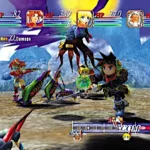 Grandia 2 Dreamcast: An Epic Journey into RPG Excellence
Grandia 2 Dreamcast: An Epic Journey into RPG Excellence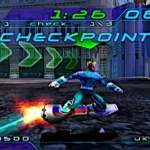 TrickStyle Review for the Sega Dreamcast
TrickStyle Review for the Sega Dreamcast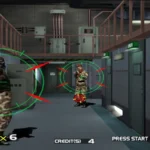 Confidential Mission: The Pinnacle of Light Gun Gaming on Dreamcast
Confidential Mission: The Pinnacle of Light Gun Gaming on Dreamcast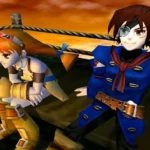 Skies of Arcadia: A Timeless Adventure in the Skies
Skies of Arcadia: A Timeless Adventure in the Skies Resident Evil Code Veronica: A Deep Dive into the Survival Horror Classic
Resident Evil Code Veronica: A Deep Dive into the Survival Horror Classic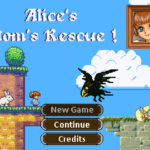 Dive into Arcade Magic with Alice's Mom's Rescue
Dive into Arcade Magic with Alice's Mom's Rescue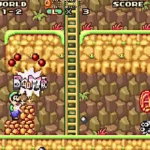 Super Mario Advance - GBA Review: A Classic Adventure Reimagined
Super Mario Advance - GBA Review: A Classic Adventure Reimagined
![Mega Drive Longplay [106] Aladdin](https://i.ytimg.com/vi/uWhJOIFKtm8/hqdefault.jpg)
Leave a Reply